DNA methylation regulator-mediated modification patterns and risk of intracranial aneurysm: a multi-omics and epigenome-wide association study integrating machine learning, Mendelian randomization, eQTL and mQTL data
- PMID: 37742034
- PMCID: PMC10518114
- DOI: 10.1186/s12967-023-04512-w
DNA methylation regulator-mediated modification patterns and risk of intracranial aneurysm: a multi-omics and epigenome-wide association study integrating machine learning, Mendelian randomization, eQTL and mQTL data
Abstract
Background: Intracranial aneurysms (IAs) pose a significant and intricate challenge. Elucidating the interplay between DNA methylation and IA pathogenesis is paramount to identify potential biomarkers and therapeutic interventions.
Methods: We employed a comprehensive bioinformatics investigation of DNA methylation in IA, utilizing a transcriptomics-based methodology that encompassed 100 machine learning algorithms, genome-wide association studies (GWAS), Mendelian randomization (MR), and summary-data-based Mendelian randomization (SMR). Our sophisticated analytical strategy allowed for a systematic assessment of differentially methylated genes and their implications on the onset, progression, and rupture of IA.
Results: We identified DNA methylation-related genes (MRGs) and associated molecular pathways, and the MR and SMR analyses provided evidence for potential causal links between the observed DNA methylation events and IA predisposition.
Conclusion: These insights not only augment our understanding of the molecular underpinnings of IA but also underscore potential novel biomarkers and therapeutic avenues. Although our study faces inherent limitations and hurdles, it represents a groundbreaking initiative in deciphering the intricate relationship between genetic, epigenetic, and environmental factors implicated in IA pathogenesis.
Keywords: DNA methylation regulator; Genome-wide association studies; Intracranial aneurysms; Machine learning; Mendelian randomization; Multi-omics.
© 2023. BioMed Central Ltd., part of Springer Nature.
Conflict of interest statement
The authors declare no competing interests.
Figures

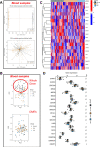
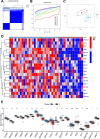
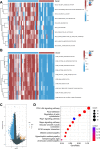
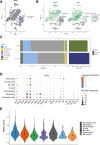




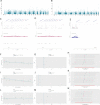
Similar articles
-
Identification of immune-inflammation targets for intracranial aneurysms: a multiomics and epigenome-wide study integrating summary-data-based Mendelian randomization, single-cell-type expression analysis, and DNA methylation regulation.Int J Surg. 2025 Jan 1;111(1):346-359. doi: 10.1097/JS9.0000000000001990. Int J Surg. 2025. PMID: 39051921 Free PMC article.
-
Multi-omics study on autophagic dysfunction molecular network in the pathogenesis of rheumatoid arthritis.J Transl Med. 2025 Mar 5;23(1):274. doi: 10.1186/s12967-025-06288-7. J Transl Med. 2025. PMID: 40045304 Free PMC article.
-
Identification of drug targets for Sjögren's syndrome: multi-omics Mendelian randomization and colocalization analyses.Front Immunol. 2024 Jun 12;15:1419363. doi: 10.3389/fimmu.2024.1419363. eCollection 2024. Front Immunol. 2024. PMID: 38933282 Free PMC article.
-
DNA methylation biomarkers and myopia: a multi-omics study integrating GWAS, mQTL and eQTL data.Clin Epigenetics. 2024 Nov 13;16(1):157. doi: 10.1186/s13148-024-01772-1. Clin Epigenetics. 2024. PMID: 39538342 Free PMC article.
-
Genetic basis of intracranial aneurysm formation and rupture: clinical implications in the postgenomic era.Neurosurg Focus. 2019 Jul 1;47(1):E10. doi: 10.3171/2019.4.FOCUS19204. Neurosurg Focus. 2019. PMID: 31261114 Review.
Cited by
-
Differential DNA methylation associated with delayed cerebral ischemia after aneurysmal subarachnoid hemorrhage: a systematic review.Neurosurg Rev. 2024 Apr 10;47(1):144. doi: 10.1007/s10143-024-02381-5. Neurosurg Rev. 2024. PMID: 38594575 Free PMC article.
-
Exploring the potential of VGLL3 methylation as a prognostic indicator for intracranial aneurysm with gender-specific considerations.Biosci Rep. 2024 Mar 29;44(3):BSR20231374. doi: 10.1042/BSR20231374. Biosci Rep. 2024. PMID: 38348744 Free PMC article.
-
Integration of Methylation and Gene Expression Deciphered Candidate Biomarkers DAB2IP and SMYD3 in Delayed Encephalopathy After Carbon Monoxide Poisoning.CNS Neurosci Ther. 2025 Feb;31(2):e70270. doi: 10.1111/cns.70270. CNS Neurosci Ther. 2025. PMID: 39953812 Free PMC article.
-
Genetic Overlap of Thoracic Aortic Aneurysms and Intracranial Aneurysms.Genes (Basel). 2025 Jan 26;16(2):154. doi: 10.3390/genes16020154. Genes (Basel). 2025. PMID: 40004483 Free PMC article. Review.
-
Investigating the potential of oxidative stress-related gene as predictive markers in idiopathic pulmonary fibrosis.Sci Rep. 2025 Jul 1;15(1):21228. doi: 10.1038/s41598-025-02579-7. Sci Rep. 2025. PMID: 40592928 Free PMC article.
References
MeSH terms
LinkOut - more resources
Full Text Sources
Medical

